The Cougar QBX Mini ITX Case Review
by E. Fylladitakis on November 13, 2015 8:00 AM EST- Posted in
- Cases/Cooling/PSUs
- Mini ITX
- Cougar
- Case
The Interior of the Cougar QBX Case
Removing the side panels of the Cougar QBX is a simple matter of undoing four thumbscrews. However, the top panel also needs to be removed for the installation of the PSU and that requires the use of a typical Philips PH2 screwdriver. For small upgrades and tweaks, removing the top panel should not be necessary.
There is also a secondary, removable metallic tray mounted on the left side of the case. This tray can be flipped upwards or removed entirely for the easier installation of components. It has a slot for one 120 mm fan and a cage that can accommodate one 3.5" drive and two 2.5" drives. If the cage is removed, a 240 mm liquid cooling radiator will fit but only one fan can be installed. Otherwise the cables needed to power the drives and fans that may be installed on this tray may create a little bit of a mess.
The interior of the QBX deceptively looks very spacious because of the case's length. Only the left half of the main tray is reserved for the motherboard. A large opening allows for the installation of coolers without having to remove the motherboard from the case. The large opening extends beyond the top end of the motherboard for the routing of cables. Smaller openings also exist to the right and bottom of the motherboard area for the same purpose, none of which is covered with a rubber grommet. The right half is almost entirely taken by the PSU, with a narrow strip reserved for the slim ODD drive.
The back of the motherboard tray is spacious enough for the routing of the few cables. There is also one slot for a single 2.5" drive, strategically placed next to an opening. This way the first SATA power connector of a PSU cable can power this drive and the rest of the connectors will continue right through the hole.
To the back of the case we can see the stock 92 mm fan. It is a simple, black and slow fan with a sleeve bearing. Although not much of a performer, it is very quiet. There are also two expansion card slot covers, with the second slot in place to allow the case to support your typical double-wide video card.
Moving on to the build test portion of this review, we installed a Corsair CX430M with the red cable set in order to give the cables a strong visual contrast. The components easily fit inside the QBX and the modular cables help with the limited space, but the stiff ATX cable could not be easily routed behind the motherboard tray. A standard Mini-ITX motherboard fits like a glove, with enough space to the top, right and bottom for the routing of cables. A CPU cooler up to 105 mm tall will fit if there is nothing installed on the secondary tray. The installation of a side panel fan will reduce the CPU cooler clearance by at least 25 mm.
Although the Cougar QBX can take a full size ATX PSU, there is a catch – only PSUs up to 140 mm long will fit and they need to have their AC cable receptacle oriented in a particular way. According to the company's documentation (below), PSUs with the receptacle facing upwards are not compatible with the QBX.
The reason for this is the PSU's position towards the front of the case and the resulting need for an extension cord, which is built in to the case. Simply put, the extension cord would not fit into the receptacle if it had to turn 180°. Or at least, that's the theory. We installed the Corsair CX430M PSU into the case, a PSU that would be incompatible according to Cougar's descriptions, and it does fit just fine. The extension inserts a little tightly into the receptacle, but fits. The only issue is that the extension cable now blocks the ODD slot. Therefore, if you are not planning on installing a slim slot-loading ODD, all ATX PSUs that are up to 140 mm long should fit.
Technically, PSUs longer than 140 mm fit as well. The holes for the routing of the PSU cables are large enough to accommodate PSUs a couple of centimeters longer. However doing so will block the installation of long graphics cards, reducing the available space to just 175 mm. Meanwhile even if the PSU is exactly 140 mm long, as recommended, if there are modular cable connectors near the left side of the PSU, they will limit the length of the graphics card. If you want to install a graphics card up to 350 mm - the maximum length card this case officially supports - then you'll need to install a non-modular PSU with a chassis no more than 140 mm long.
Overall, the installation of components inside the Cougar QBX is a relatively easy process. It may not be entirely seamless, requiring at least one proper Philips PH2 screwdriver and some prep work in advance, but it is not difficult. However the proper selection of these components should be a priority, as the small size of the case means that there's not much room for error when using larger components.



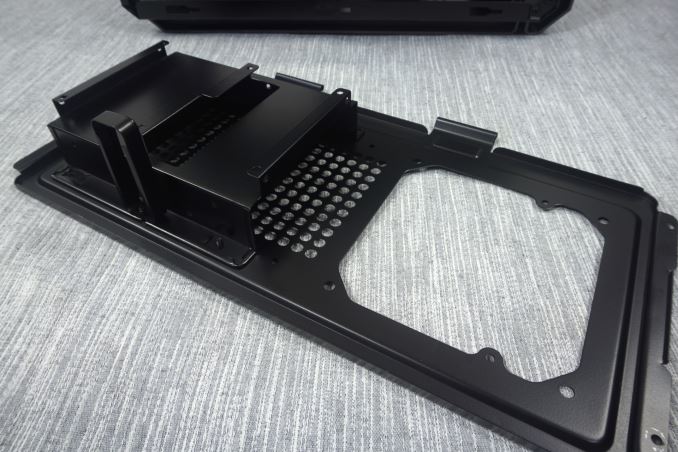
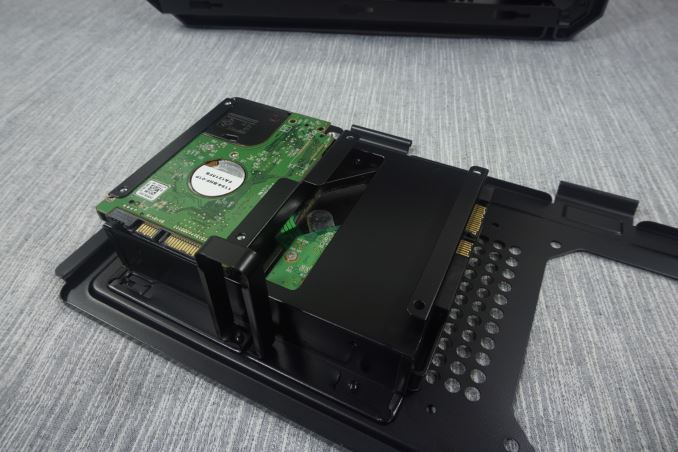

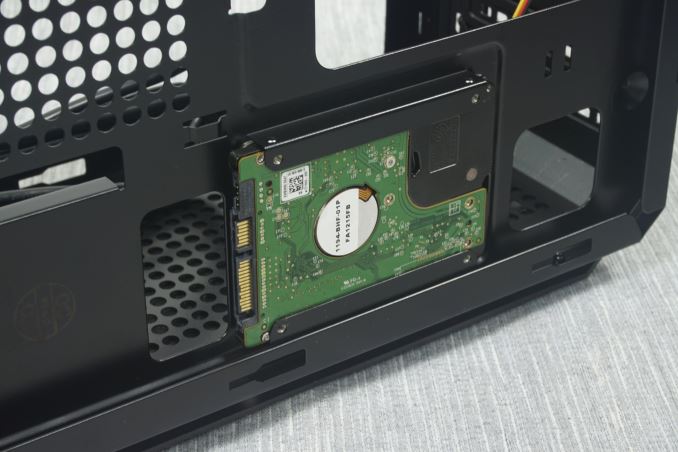
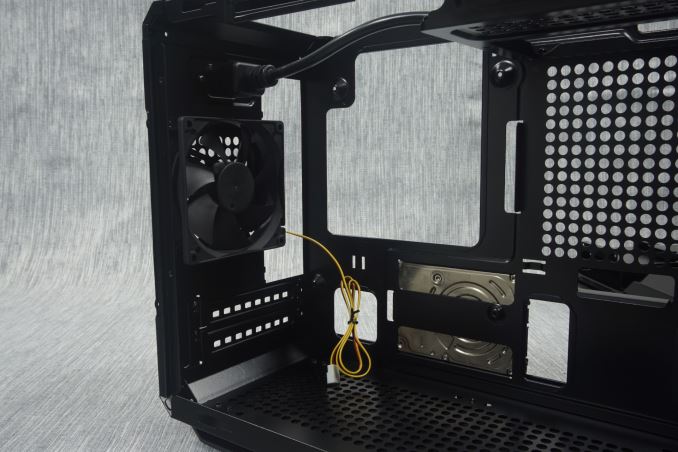
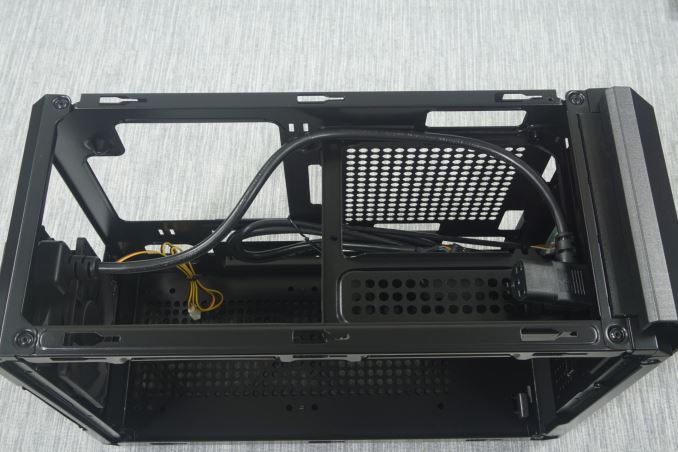
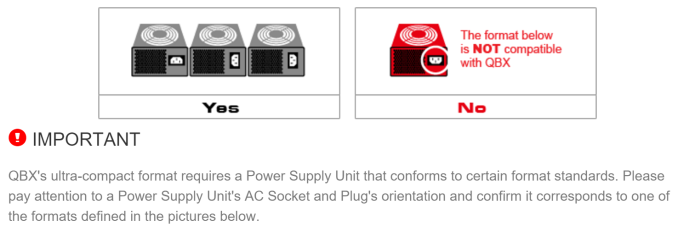
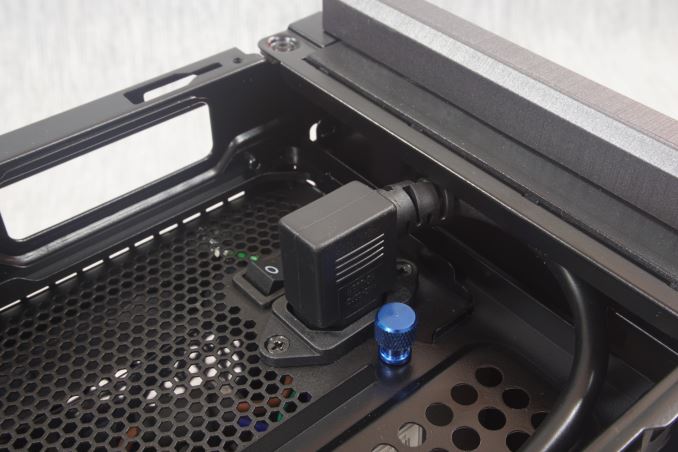
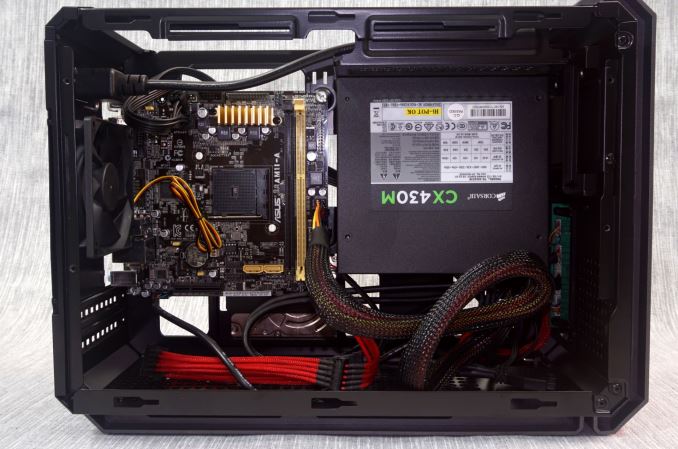
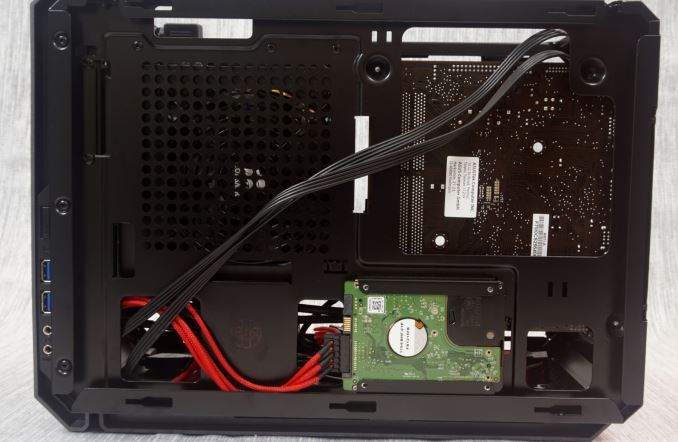
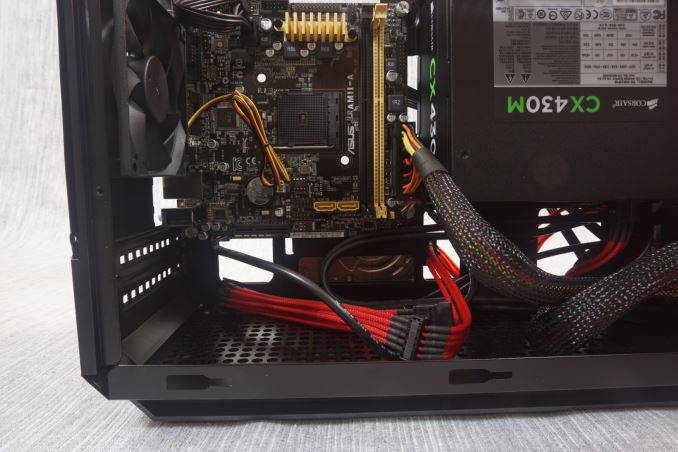








42 Comments
View All Comments
SpartyOn - Friday, November 13, 2015 - link
I like the exterior look of this case and will definitely keep an eye on it, but I think for practicality purposes, I'll have to stick with my Cooler Master 120. The Cougar just looks a little big for my tastes in the wrong dimension (too tall).Before Cooler Master released the 130 without the drive rack (though by the looks of the 130, the cage maybe would still take some modding) I modded the CM 120 by removing the internal bays and mounting two 120x120x52mm CLCs in it with three 120mm fans in a stacked rad configuration (F-R-F-R-F), one for the GPU and one for the CPU. The overclocked CPU gets the fresh intake from the front and then I was actually still able to cram in two 120mm fans, one on each side of the rad stack, to blow fresh air through to the second interior rad. Add in CM's 80mm side mobo fan and the Antec 92mm spot cool I threw in there for the mobo and the VRAM on the back of my GTX 770 4GB and I've got a whopping SEVEN fans in that shoebox with two radiator systems. And that's not counting the 92mm an I have on the modded GTX VRAM. All of the fans are PWM except for the 80mm and the spot cool, so it's quiet when it needs to be and boss when things ramp up.
Been daily driving a 3570K @ 4.65 GHz and a GTX 770 4GB @ 1400 MHz core/7940 MHz memory for three years now.
Still my favorite ITX to tinker with.
Been waiting for Pascal to drop before considering an upgrade, but it's all good; I'm almost hitting GTX 970 3dMark scores with my overclock.
If I can see this Cougar in-person before Pascal drops, I might give it a go if I feel it can suit my needs, otherwise it may be back to the 120.
jwcalla - Friday, November 13, 2015 - link
Somebody make something smaller.romrunning - Friday, November 13, 2015 - link
This Cougar case does seem too big for mini-ITX. My Silverstone SG05 seems like it's half the height of the QBX. To me, that's part of the point of going mini-ITX - you want something small.tabascosauz - Friday, November 13, 2015 - link
In 10-15L ITX designs, there are essentially only two conventional designs. One moves the PSU to the side so that a cooler like the D9L or U9S can be accommodated, and the M1, SG08 and QBX follow this route. The other is to suspend the PSU over the motherboard, saving space but limiting CPU coolers to a maximum of something like the L9x65. The SG05, SG06, and SG13 follow this design. IMO the Elite 130 doesn't make a whole lot of sense aside from long GPU support, seeing as how the case is large yet can't accommodate a decent air cooler.Samus - Friday, November 13, 2015 - link
The FT03-mini is 17.6L but is a complete mindwarp to work inside. Once you figure it out it's actually quite genius. Once you figure it out...I'd never recommend one to a novice. I think Cougar is targeting a wider audience than Silverstone, which I've always considered to be a niche brand.
sna1970 - Friday, November 13, 2015 - link
this case is stolen from NCASE M1 , the same design . SHAME ON THEM !https://www.ncases.com/
techxx - Friday, December 30, 2016 - link
Similar design. I think it's great they could bring something this good to the masses at this price point.Xajel - Monday, November 16, 2015 - link
I would like to see a review like this for the croudfunded NCASE M1, small yet very feature rich, including ODD, large graphics cards, Water cooling support, etc.. the only drawback some might see is it support mainly SFX PSU, and has a very limited ATX PSU supporthmmmm. when we will start to see Type-C ports on cases, AFAIK only one case now have support for it... hope AnandTech will make an article in this regard, maybe case manufacturers will rethink again about adopting it...
sna1970 - Wednesday, November 18, 2015 - link
front bay USB 3.1 Already exist from Asus , Gigabyte and Asrock.you can add front USB3.1 to any case available.
DanNeely - Thursday, November 19, 2015 - link
Filling an entire drivebay up for a pair of ports you can hide under your thumb is inelegant at best. If you've got a case that hides the drive bays behind a door (aside from visual aesthetics, this offers better noise suppression in most cases) it's borderline unusable.Unfortunately it's probably going to be a few years before we see a widespread and largescale replacement of A ports with C ones on the front panels of cases. Worse is that because they're a different size; even if the case manufacturers offer a swapable upgrade part in most cases it's not going to have a particularly clean look. (The only exceptions being designs that put the ports bezels on a separate case part instead of just cutting holes in a large front/top panel.)